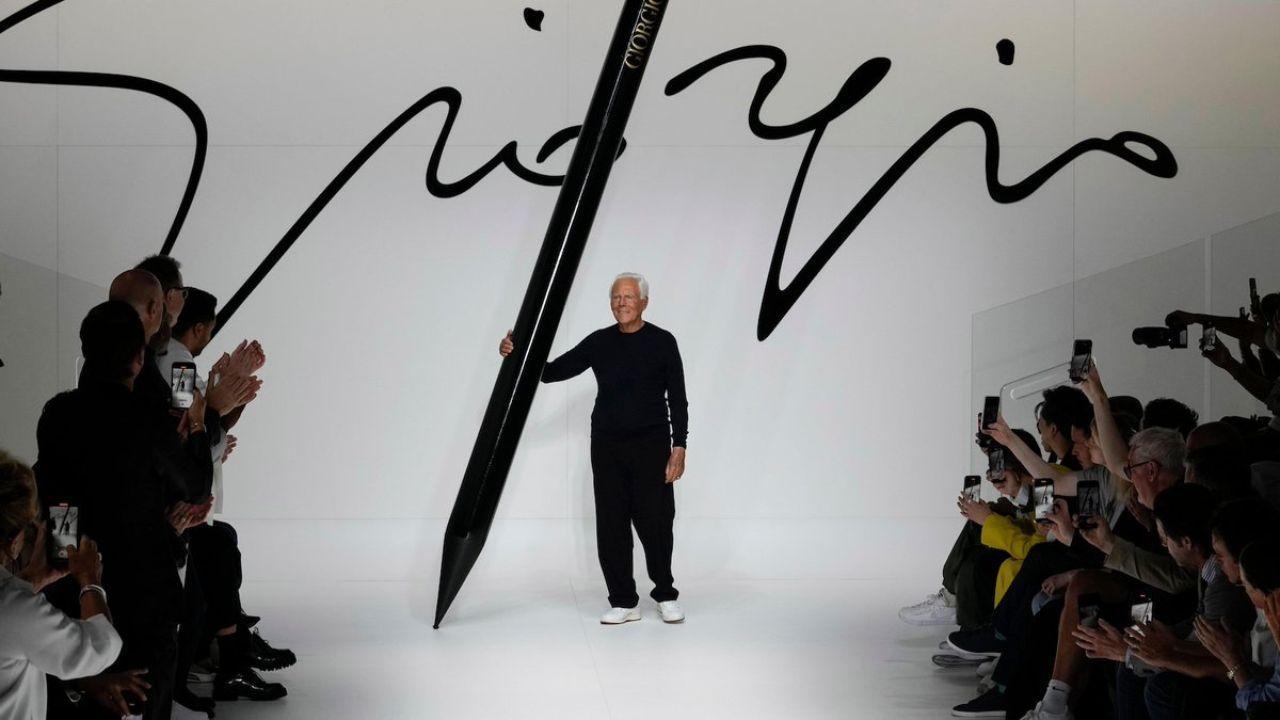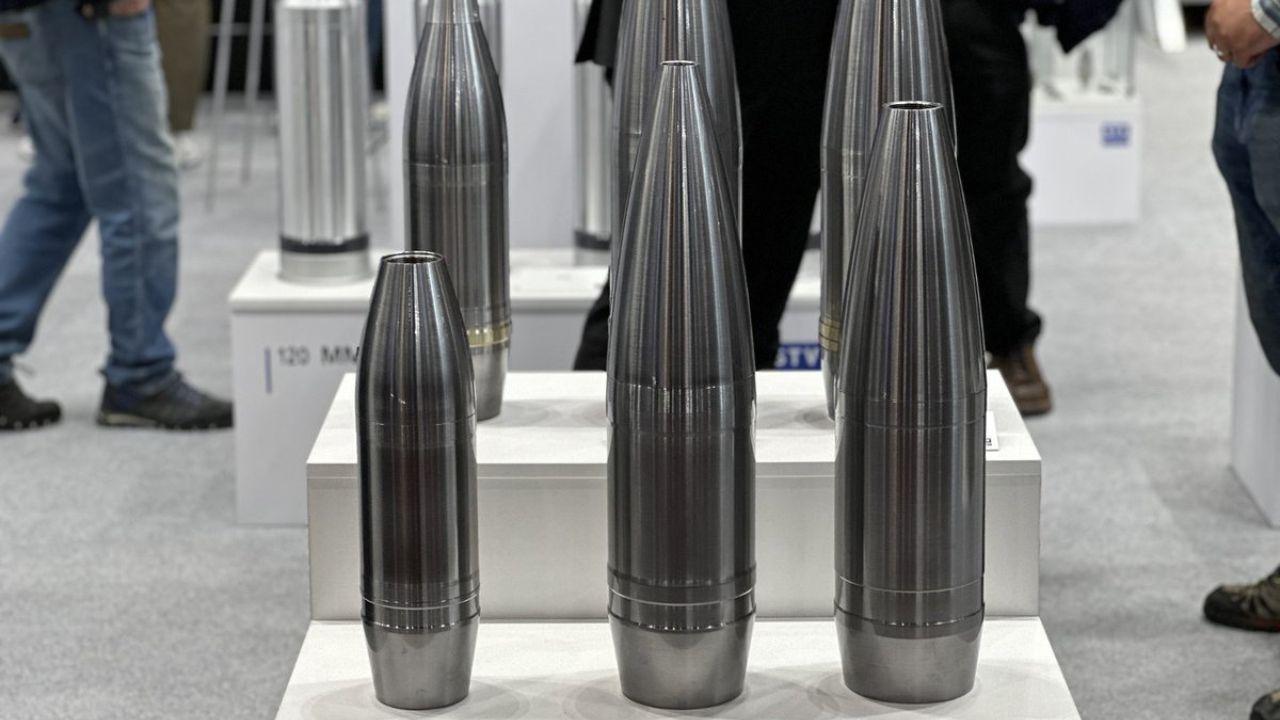
Post by : Avinab Raana
Photo : X / ABC News
Armani Succession Plan Revealed
The fashion world paused this week as Giorgio Armani’s will came to light, unveiling an extraordinary succession plan that blends family legacy with market realism. Widely respected as a master of elegance, Armani instructed his heirs to sell a 15% share of his heritage fashion empire within 18 months, setting the stage for a major shift in control and ownership.
Heirs Gain Major Stakes in the Empire
Armani’s will distributes control carefully: forty percent goes to his longtime collaborator and head of menswear Leo Dell’Orco, while his niece Silvana Armani, who leads womenswear, and nephew Andrea Camerana each receive fifteen percent. This allocation underscores Armani’s belief in continuity and creative stewardship within trusted ranks under the overarching Armani succession vision.
Non-Voting Shares to Close Relatives
Beyond the voting stakes, two other family members—his niece Roberta and his sister Rosanna—were granted non-voting shares of 15% each. While they won’t carry decision-making power, their roles reflect symbolic importance: loyalty, representation, and preserving family ties in the evolving structure of the fashion house.
Foundation Holds Remaining Control
Thirty percent of ownership is assigned to the Armani Foundation, established in 2016. This body is now central to the succession plan, not just in a managerial sense but in preserving the brand’s identity. Armani’s instructions tie the foundation with guiding principles for design — “essential, modern, elegant and understated design with attention to detail and wearability”, ensuring the creative heart continues beating under his will.
Share Sale Directive and Preferred Buyers
In a twist that surprised many in the luxury world, Armani’s will directs the heirs to sell a 15% stake of the company within one year to eighteen months of his death. He names preferred potential buyers: LVMH, Essilor-Luxottica, or L’Oréal, or any fashion house “of similar standing.” The share sale clause signals Armani’s recognition that bringing in external partners may strengthen the empire’s resilience and global reach.
Why the Sale Matters for the Luxury Industry
This part of Armani’s plan reveals a nuanced understanding of the fashion landscape. For decades, he resisted offers from conglomerates and held tight control over his luxury business. The sale directive represents a strategic shift, a balancing act between preserving independence and acknowledging that scale, partnerships, or fresh capital may be necessary in a competitive global market.
Creative Legacy Structured in His Will
Armani was meticulous even in his final design decisions. The will makes it clear that forthcoming collections, his last Emporio Armani and Giorgio Armani lines—will be presented during Milan Fashion Week. He also laid down design guidelines for the future: an emphasis on wearability, subtle elegance, modernity. These directives are part of the heritage fashion empire he built, ensuring that under new ownership patterns, his vision remains central.
Leo Dell’Orco: The Chosen Creative Custodian
Leo Dell’Orco, who has been a key figure in Armani’s menswear line for years, is elevated under the will. Given 40% control and likely entrusted with major creative leadership, he becomes a crucial figure in keeping the brand’s legacy alive. This appointment reflects trust built over decades, making the transition less of a rupture and more of a continuation.
Family’s Role in Leadership
Silvana Armani and Andrea Camerana, entrusted with 15% each, symbolize the family’s role not just in name, but in active leadership. Their inheritance ensures that womenswear and broader brand decisions remain in familiar hands. Roberta and Rosanna, though non-voting, maintain personal and familial presence in Armani’s universe. The Armani succession thus blends formal power with symbolic legacy.
Financial and Strategic Implications
The sale of the 15% stake could have financial ripple effects. Bringing in a luxury conglomerate may provide capital for expansion, supply chain modernization, or marketing in new markets, especially Asia and digital channels. But it could also bring increased pressure to scale, conform, or accommodate investor expectations — tensions that often unsettle purely creative houses used to total autonomy.
Brand Independence and Control Retained
Despite the sale plan, Armani’s instructions preserve substantial control.The Foundation, plus the large stake of Dell’Orco, ensure that the core decision-making, particularly creative direction, remains under internal oversight. The non-voting shares allow family participation without compromising control. This dual structure reflects Armani’s lifelong emphasis on independence even as he shapes his own succession.
Global Perception of the Move
Luxury industry analysts are watching closely. Armani’s name carries weight: it conjures Italian craftsmanship, understated elegance, luxury without excess. The heritage fashion empire he leaves is respected globally. The succession plan’s combination of family stewards, non-voting roles, and selective external shareholding may become a model for other fashion houses grappling with founder transitions.
Potential Risks and Tensions Ahead
Transitions of this magnitude rarely go smoothly. Risks include disagreements among heirs, clashes between creative vision and shareholder demands, or strategic drift under external partners. Maintaining the brand’s identity while accommodating change will require careful governance. The pressure to perform financially may grow, especially if external investors come with expectations beyond heritage and elegance.
Armani’s Final Collections as a Statement
His design of the final Emporio Armani and Giorgio Armani collections, to be unveiled at Milan Fashion Week later this month, is more than ritual. It is the last visible act of the man whose fashion empire embodied minimalism, balance, and refinement. The will demands these collections remain true to his design doctrine — essential, elegant, modern — linking the present to his envisioned future.
What This Means for Luxury Conglomerates
For LVMH, Essilor-Luxottica, L’Oréal and others, the offer of being preferred buyers opens a rare window. Acquiring a stake in Armani could expand their portfolios in segments where Armani’s brand remains distinct, premium, and perhaps resistant to overexposure. The deal also raises competitive questions: which firm could satisfy the conditions and, more subtly, respect Armani’s design ethos while turning investment.
Legacy, Heritage, and Emotional Resonance
Armani’s name has always carried emotional power. To many, he was as much a cultural icon as a designer. His jackets, suits, evening gowns defined transitions in fashion history. As one industry observer put it, Armani did not simply style the elite; he dressed everyday dignity. The will is as much about preserving emotional resonance as financial worth ensuring that his aesthetic voice continues even when he is gone.
Regulatory and Legal Complexities
Italian succession law, inheritance tax, oversight of foundations, and possible debates over how external shareholding interacts with voting rights could all crop up in the months ahead. Transparency, clarity in share sale mechanics, and the durability of creative clauses in the will are likely to be key issues. The will’s legal deposit, rewritten in spring and partly handwritten, demonstrates Armani’s personal touch—and may require careful interpretation by courts or advisors.
The Cultural Moment: Fashion, Control, and Mortality
Armani’s plan arrives at a time when many founder-led brands in luxury are grappling with control, legacy, and sustainability. What does it mean to hand over power, to let others in, yet to ask that the brand remain unchanged in spirit? In this way, Armani’s will speaks to mortality, legacy, identity. It is a template of how a fashion house can transition without unraveling its soul.
Armani’s Final Statement
Giorgio Armani’s will is his final act of design not merely of clothes, but of structure. By directing the sale of a minority interest, assigning creative roles, vesting control in the Foundation, and laying out the design principles for the future, he has shaped the next chapter in the Armani succession story with clarity, elegance, and foresight. What remains to be seen is how well the heirs, family members, and potential external partners can honor that vision while adapting to the demands of an ever-changing luxury market. The legacy Armani built was never about noise; it was about nuance. In that spirit, his final collection will be his last voice and the world waits to see if it echoes as he intended.
Armani succession, Heritage fashion Empire, Share sale










GST Overhaul Triggers Massive Road Freight Surge in India
India braces for a huge spike in road freight as the GST overhaul and festive season drive consumpti

United CEO Warns Spirit Airlines May Not Survive Financial Struggles
United Airlines CEO predicts Spirit Airlines could go out of business due to repeated bankruptcies a

Allcargo Opens Panapakkam Logistics Park Near Chennai
Allcargo Supply Chain Launches Panapakkam Logistics Park to Boost Southern India Distribution with M

HAL Receives Third GE-404 Engine for LCA Mk1A Fighter Jet
HAL has received the third GE-404 engine from the U.S. for the LCA Mk1A fighter jet program, with an

GlobalLogic Ericsson Launch Private 5G at Hitachi Rail Plant
GlobalLogic and Ericsson have deployed a private 5G network at Hitachi Rail’s Hagerstown facility, e

Honda Cuts Bike & Scooter Prices by Up to ₹18,887
Honda lowers prices of bikes and scooters under 350cc by up to ₹18,887, making commuting more afford